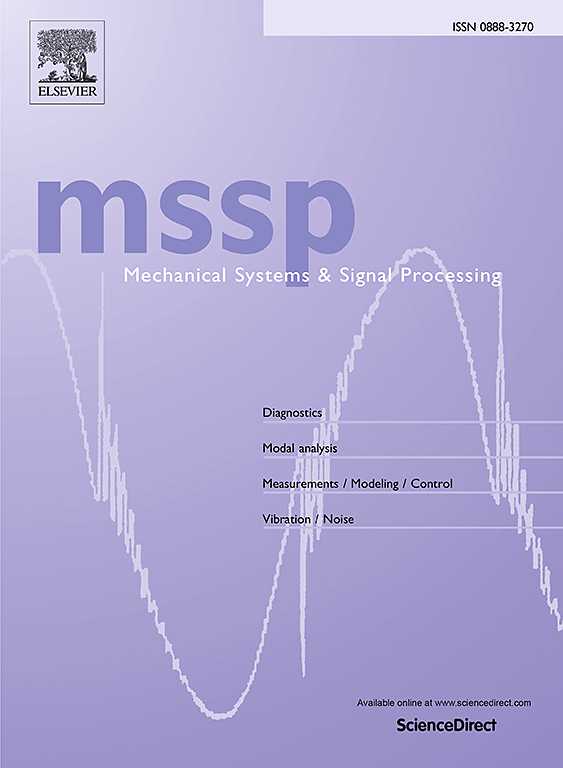An extended Chebyshev spectral method for vibration analysis of rotating cracked plates
IF 7.9
1区 工程技术
Q1 ENGINEERING, MECHANICAL
引用次数: 0
Abstract
A semi-analytical model for free vibration analysis of rotating plates with cracks is developed based on an extended Chebyshev spectral method. The displacement variables of the rotating plates modeled with thick plate theory are established by a new form of improved Chebyshev series expansions composed of a standard Chebyshev series and supplementary crack functions. The crack functions are derived from the Fourier cosine series and their antisymmetric counterparts to capture the stress singularity at the crack tip. The model systematically considers the rotating effects including the rotating stiffening, rotating softening, and Coriolis force effects. The penalty function method was used to simulate the boundary conditions, and the displacement components of the cracked plate were uniformly expressed in the form of a series expansion. The vibration governing equations of the rotating cracked plate are derived based on Hamilton principle. Experimental validation of dynamic modeling of a cracked plate is conducted. The efficiency and accuracy of the proposed method are further demonstrated by comparing results with reference data, FEM simulations, and experimental data. Numerical results show that the extended Chebyshev spectral method can accurately capture the complex geometries at crack locations while maintaining the rapid convergence characteristic of traditional Chebyshev spectral methods. Findings reveal that cracks increase modal coupling, resulting in more complex natural frequencies and mode shapes.
求助全文
约1分钟内获得全文
求助全文
来源期刊

Mechanical Systems and Signal Processing
工程技术-工程:机械
CiteScore
14.80
自引率
13.10%
发文量
1183
审稿时长
5.4 months
期刊介绍:
Journal Name: Mechanical Systems and Signal Processing (MSSP)
Interdisciplinary Focus:
Mechanical, Aerospace, and Civil Engineering
Purpose:Reporting scientific advancements of the highest quality
Arising from new techniques in sensing, instrumentation, signal processing, modelling, and control of dynamic systems
 求助内容:
求助内容: 应助结果提醒方式:
应助结果提醒方式:


